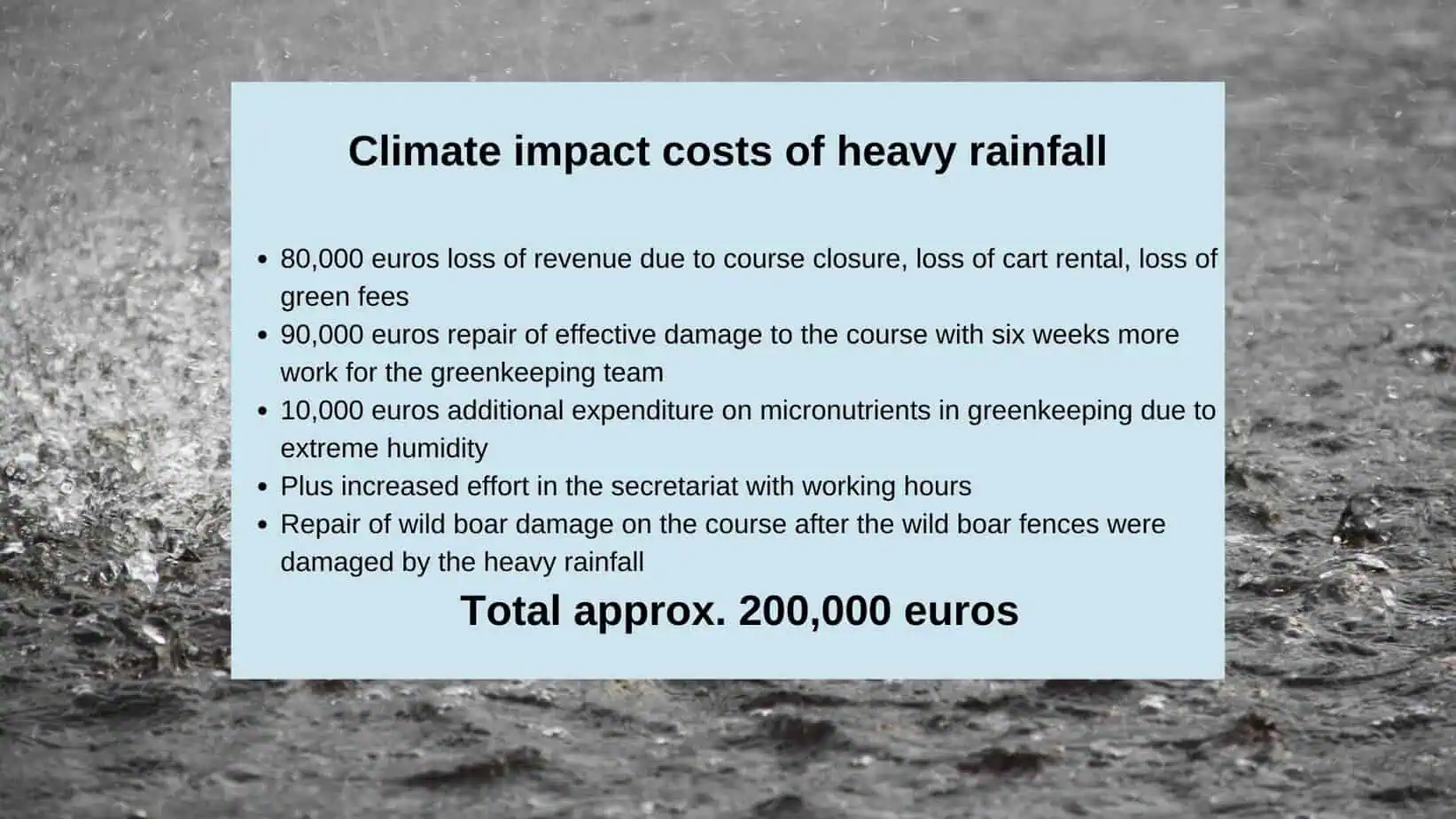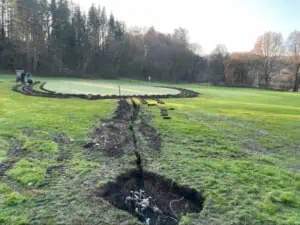CC Schloss Langenstein: How climate impact costs add up
Looking back on the 2024 season, Caroline Hoffmann, Managing Director of Country Club Schloss Langenstein, talks about the “shovel trauma”. The management of the 18-hole golf course in Baden-Württemberg now knows what the term “climate impact costs” means in practice. In 2023 and 2024, the golf course, which covers an area of 120 hectares and is located in a water conservation area, was hit by heavy rainfall and flooding several times. The average annual precipitation in previous years was 650 litres of rain per square meter. In 2024, the course recorded 500 litres within six weeks. “Our greenkeepers repaired the entire path system three times alone, two small bridges were washed away, and the greenkeepers had shovel trauma from the constant bunker work,” Hoffmann sums up the situation, which is also reflected in the finances. “Regardless of the material costs for the complete repairs, diesel costs, for example, have also risen by a third because the greenkeepers had to drive back and forth so often.” Green fees were also lost because the course was unable to access the entire 18 holes for six weeks.
Extreme weather remains unpredictable
This makes the case of Country Club Schloss Langenstein a classic example of climate impact costs, which, according to a study commissioned by the Federal Ministry for the Environment, amounted to around 145 billion euros in Germany between 2020 and 2021 and could rise to 900 billion by 2050. Climate impact costs are the extreme weather costs or economic climate damage costs caused by the emission of greenhouse gases.
Over the past two years, CC Schloss Langenstein has realized that such climate-related costs are incalculable. Caroline Hoffmann’s conclusion sounds sobering: “We didn’t have it on our radar that we could be exposed to such masses of water.” The course, which has been awarded gold in the DGV Golf & Nature certificate and is a member of the Leading Golf Clubs of Germany, is one of those golf operations that deal intensively with the issue of water management and claim to have high environmental standards. “We don’t use drinking water for irrigation and have been working on the issue of water for six years. The greens and bunker irrigation has been renewed and switched to individual sprinklers in order to reduce water consumption.”
Rethinking water management
However, the last two years have shown that extreme dry spells are not the only problem. “We need to get the water off the course much faster,” Hoffmann says, referring to the heavy rainfall. The drainage and water collection system on the golf course is being completely renewed, pond zones extended, and buffer areas created.
According to the managing director, the costs are not included in the normal budget of an operating facility. There is hardly any way around a contribution from the golfers. At CC Schloss Langenstein, members have so far been very understanding of the problem. “We receive 95% loving feedback. The members have seen for themselves how extreme the rainfall was.” They don’t know what the future holds at Schloss Langenstein. This is another insight: weather is unpredictable. But they are no longer helplessly at its mercy in future. Adaptation is the solution. At CC Schloss Langenstein, they want to be prepared for future exceptional situations. Then, the future will look bright.









